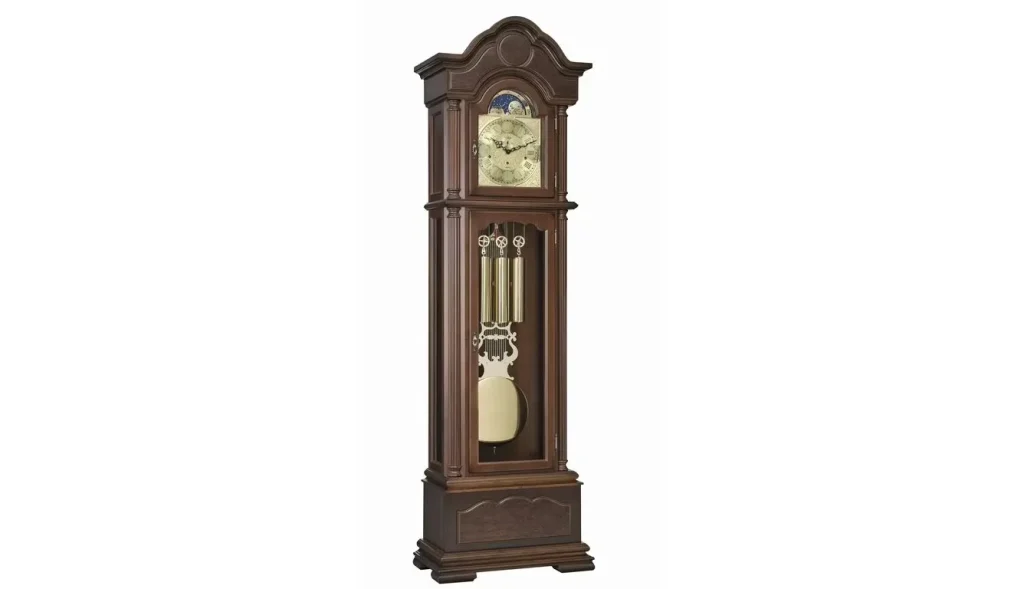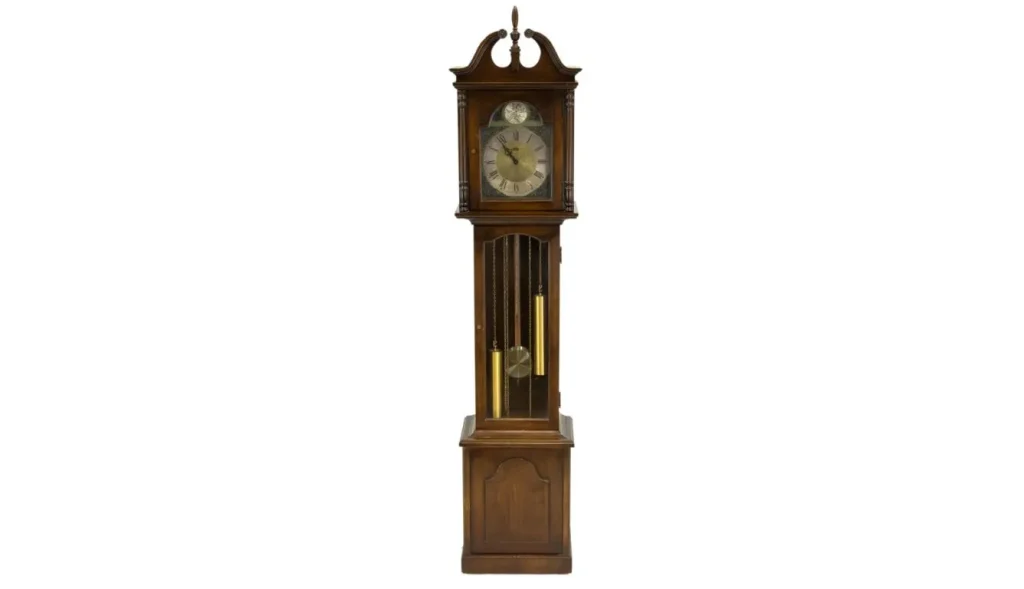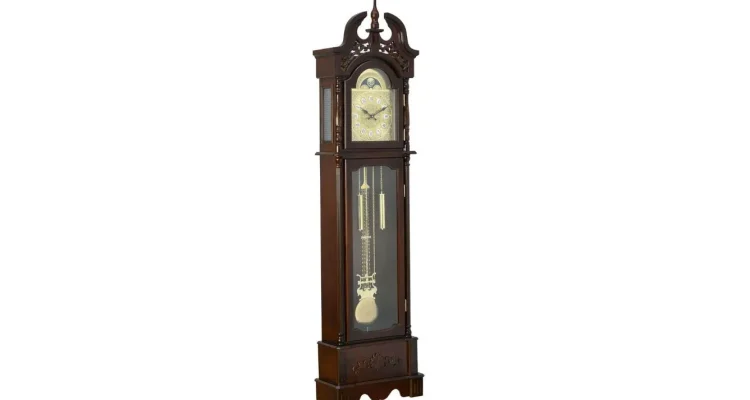What is a Grandmother Clock?
Time is one of those things we always want to keep track of, whether it’s for practical reasons or simply because it’s fascinating. When it comes to clocks, especially the more ornate and historical ones, there’s a whole world to explore. One of the more intriguing types is the grandmother clock. But what exactly is a grandmother clock? Let’s dive into the details and discover what makes this timepiece so special.

Understanding the Grandmother Clock
Definition of a Grandmother Clock
A grandmother clock is a tall, freestanding, weight-driven pendulum clock with a height typically between 5 and 6 feet. It’s essentially a smaller version of the more well-known grandfather clock. While the terms are sometimes used interchangeably, the main difference lies in their size. Grandfather clocks are taller, usually over 6 feet, whereas grandmother clocks are shorter and more compact, making them a perfect fit for smaller spaces.
History of the Grandmother Clock
The grandmother clock, like many timepieces, has roots that stretch back centuries. Its origins can be traced to the 18th century when clockmakers began creating smaller versions of the tall case clocks that were popular in wealthy homes. These smaller clocks were designed for more modest dwellings or as additional clocks in larger homes. Over time, the grandmother clock became a beloved item in many households, appreciated for its elegance and practicality.
The Aesthetic Appeal
Grandmother clocks are not just functional; they are also beautiful pieces of furniture. These clocks often feature intricate woodwork, elegant dials, and sometimes, ornate carvings. The cases are usually made from high-quality woods such as oak, cherry, or mahogany, with finishes that enhance the natural beauty of the wood. The pendulum, often visible through a glass panel, adds a dynamic element to the clock’s design.
Mechanical Features
At the heart of every grandmother clock is its movement. These clocks are typically weight-driven, with the weights hanging from chains or cables. The pendulum swings back and forth, regulating the timekeeping mechanism. Many grandmother clocks also feature chimes, which strike on the hour, and sometimes even on the quarter-hour. The most common chime is the Westminster chime, but others, such as the Whittington or St. Michael, can also be found in these clocks.
Key Characteristics of Grandmother Clocks
Height and Size
As mentioned earlier, grandmother clocks stand between 5 and 6 feet tall. This makes them more versatile in terms of placement within a home. They fit comfortably in rooms with lower ceilings or in spaces where a larger clock might be overwhelming. Despite their smaller size, they still command attention and serve as a focal point in any room.
Materials Used
The choice of materials is crucial in the making of a grandmother clock. The case is usually crafted from solid wood, with oak, cherry, and mahogany being the most popular choices. These woods are selected not only for their durability but also for their ability to be beautifully finished and polished. The dials are often made of brass, and the hands are crafted with great care to match the overall design of the clock.
Movement Types
Grandmother clocks feature mechanical movements, typically driven by weights and regulated by a pendulum. The chimes are an important feature of these clocks, with the Westminster chime being the most iconic. However, some clocks offer a choice of chimes, allowing the owner to select their preferred sound. The movements are meticulously engineered to ensure accurate timekeeping and a pleasant auditory experience.
Longevity and Durability
One of the reasons grandmother clocks have remained popular over the years is their longevity. When properly maintained, these clocks can last for generations. The combination of quality materials and skilled craftsmanship means that a grandmother clock is not just a purchase; it’s an investment that can be passed down through the family.
The Cultural Significance of Grandmother Clocks
Symbolism in Timekeeping
Clocks have always been more than just tools for telling time; they are symbols of the passage of time itself. The grandmother clock, with its steady ticking and chiming, serves as a reminder of the rhythms of life. It symbolizes continuity, stability, and the importance of time in our lives.
Role in Family Heritage
Grandmother clocks often become family heirlooms, passed down from one generation to the next. They carry with them the memories of the families who owned them, marking the passage of time in a very personal way. The clock may have been there for significant family events, its chimes echoing through the years.
Influence on Modern Clocks
Even in the age of digital timekeeping, the influence of traditional clocks like the grandmother clock can still be seen. Many modern clocks, whether they are mantel clocks or wall clocks, borrow design elements from these classic timepieces. The elegance and craftsmanship of a grandmother clock continue to inspire clockmakers today.
Buying a Grandmother Clock
What to Look for When Purchasing
If you’re in the market for a grandmother clock, there are a few things to keep in mind. First, consider the size of the clock and where you intend to place it. Ensure that it will fit comfortably in your space. Next, examine the materials and craftsmanship. A high-quality clock will be made from solid wood and have a well-crafted movement. Finally, consider the chimes. If possible, listen to the clock before purchasing to ensure you like the sound.
New vs. Antique
When buying a grandmother clock, you’ll need to decide between a new or antique clock. New clocks come with the latest technology in clockmaking, often with more reliable movements and a variety of features. However, antique clocks have a charm and history that new clocks simply can’t replicate. They often come with a story, adding character to your home.
Reputable Brands
There are several reputable brands known for making high-quality grandmother clocks. Brands such as Howard Miller, Ridgeway, and Hermle have a long history of producing finely crafted clocks. These brands are known for their attention to detail and use of quality materials, ensuring that your clock will be a treasured piece for years to come.
Maintaining a Grandmother Clock
Regular Maintenance Tips
Like any mechanical device, a grandmother clock requires regular maintenance to keep it running smoothly. This includes winding the clock on a regular basis, usually once a week, and keeping the case clean and free from dust. It’s also important to check the pendulum and weights to ensure they are functioning properly.
Common Repairs
Despite their durability, grandmother clocks can sometimes develop issues. Common problems include the clock stopping unexpectedly, chimes that are out of sync, or the pendulum not swinging correctly. Many of these issues can be fixed with a little troubleshooting, but for more serious problems, it’s best to consult a professional clockmaker.
Finding a Professional
If your grandmother clock needs repair, it’s important to find a qualified professional who specializes in clock repair. A skilled clockmaker will have the knowledge and experience to diagnose and fix the problem, ensuring that your clock continues to keep time accurately and chime beautifully.
FAQs
What is the difference between a grandmother clock and a grandfather clock?
The main difference between a grandmother clock and a grandfather clock is their height. Grandfather clocks are taller, usually over 6 feet, while grandmother clocks stand between 5 and 6 feet tall.
How can I determine the age of a grandmother clock?
You can determine the age of a grandmother clock by looking at the maker’s mark, serial number, or other identifying features such as the design of the dial or case. Consulting a clock expert can also provide valuable insights.
Are grandmother clocks valuable?
Yes, grandmother clocks can be valuable, especially if they are antique, in good condition, and made by a reputable manufacturer. Their value can increase over time, particularly if they are well-maintained.
How often should a grandmother clock be serviced?
A grandmother clock should be serviced every 3 to 5 years by a professional clockmaker to ensure it continues to run smoothly and accurately.
Can I move a grandmother clock by myself?
It’s not recommended to move a grandmother clock by yourself, as they are delicate and can be easily damaged. It’s best to hire professionals who have experience moving large and intricate timepieces.

Conclusion
In summary, the grandmother clock is a timeless piece that combines functionality with beauty. Its smaller size makes it a versatile addition to any home, while its rich history and cultural significance add depth to its charm. Whether you’re looking to purchase one for the first time or maintain a family heirloom, a grandmother clock is a valuable and meaningful investment.


Congratulation!